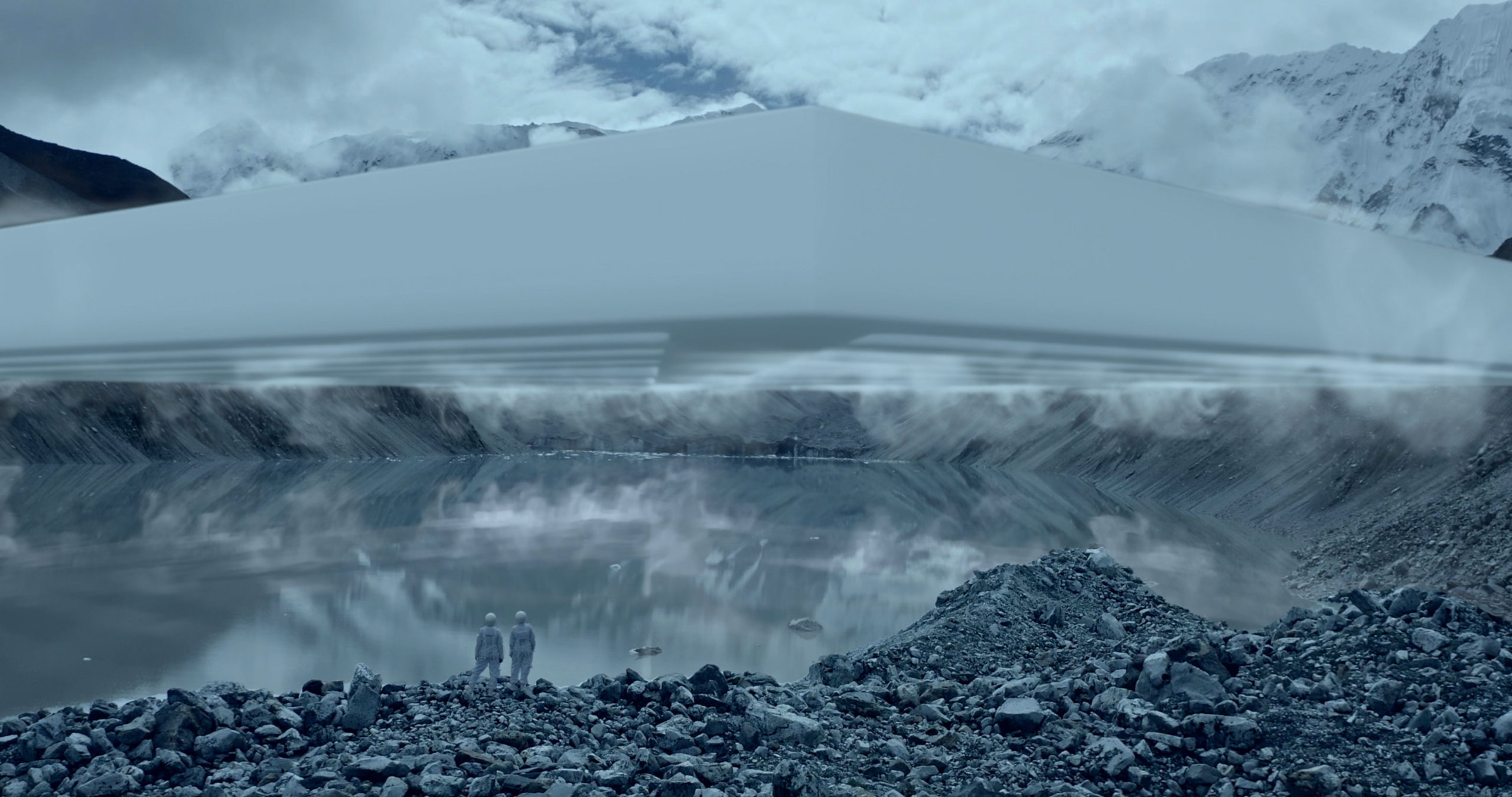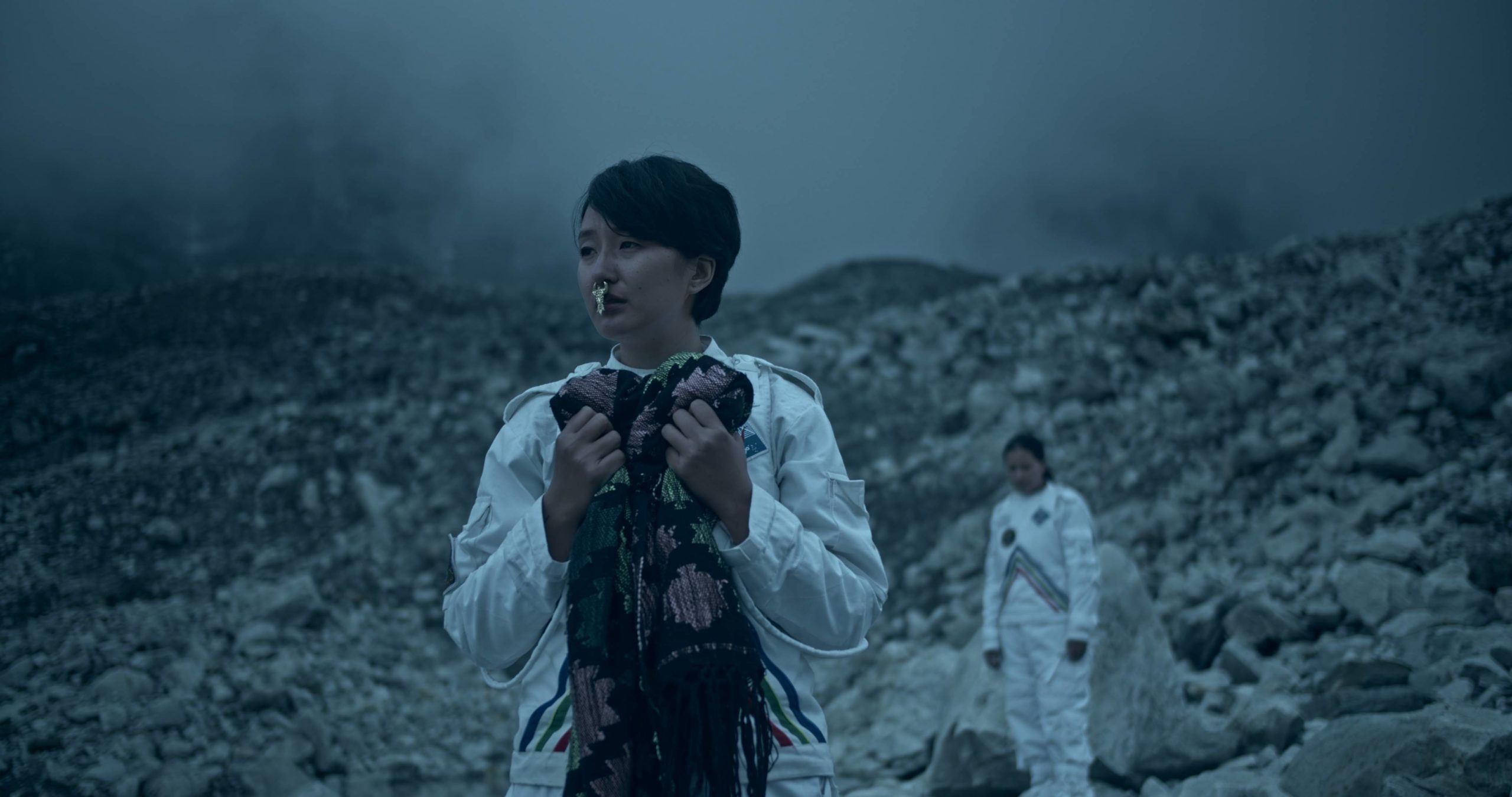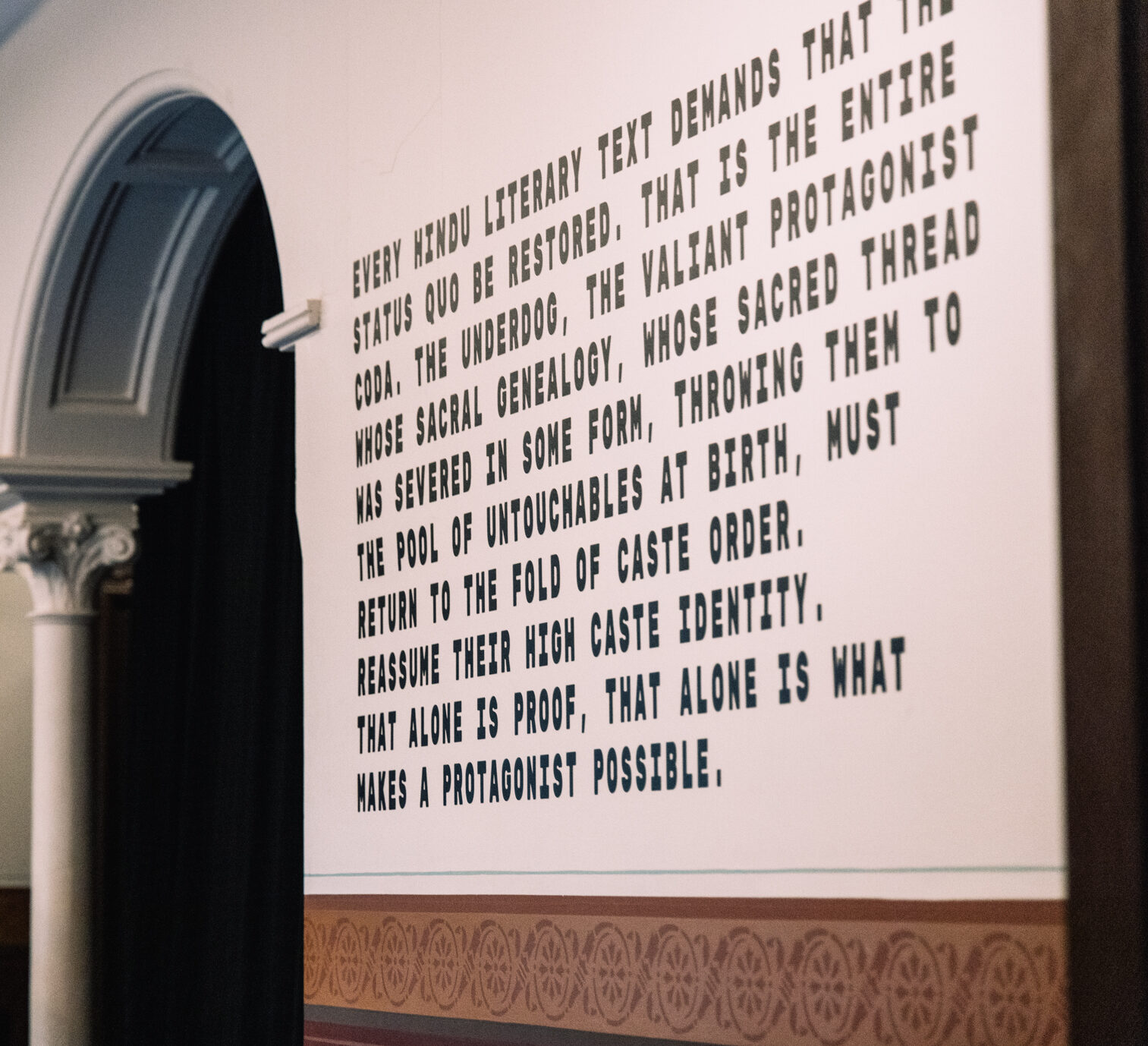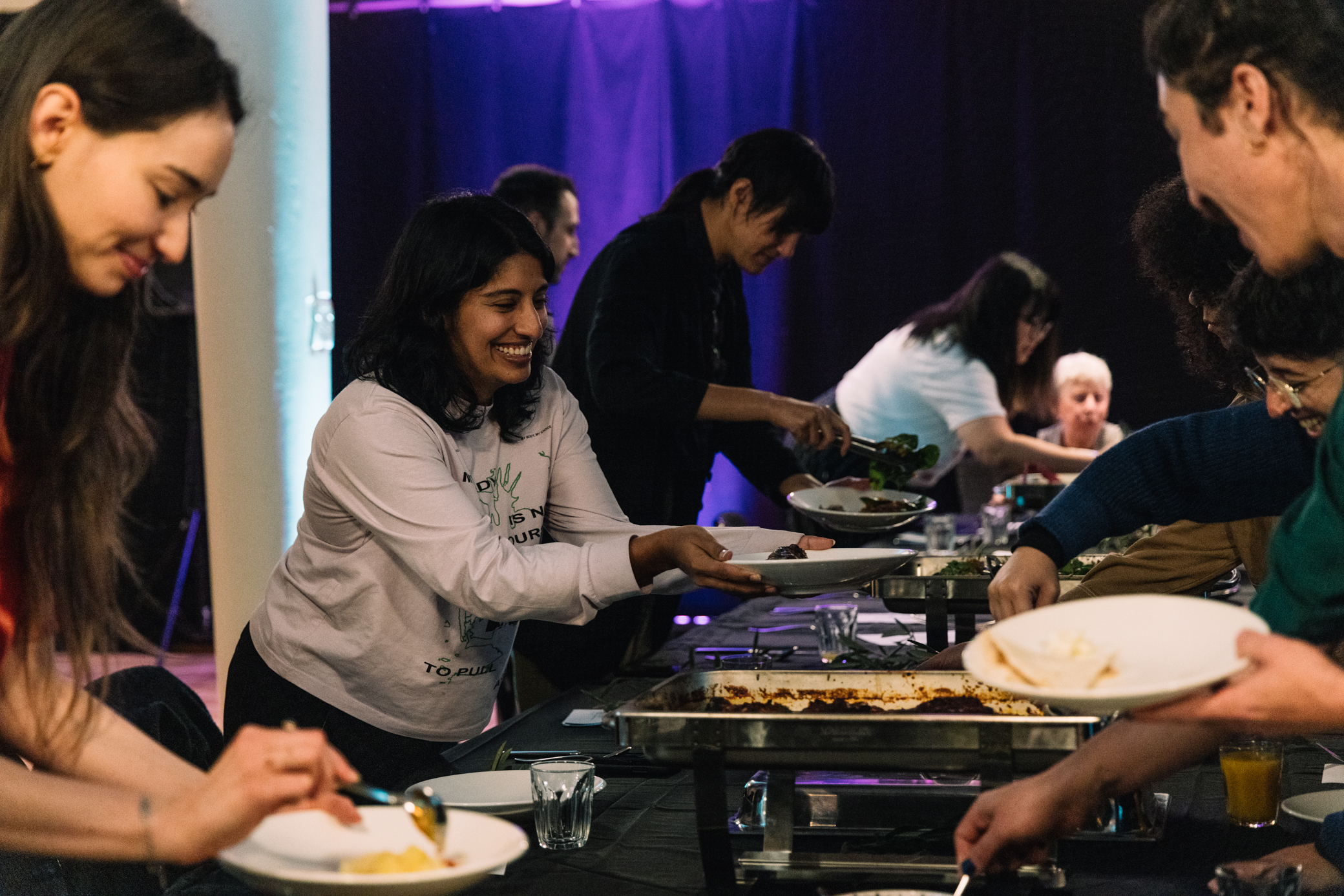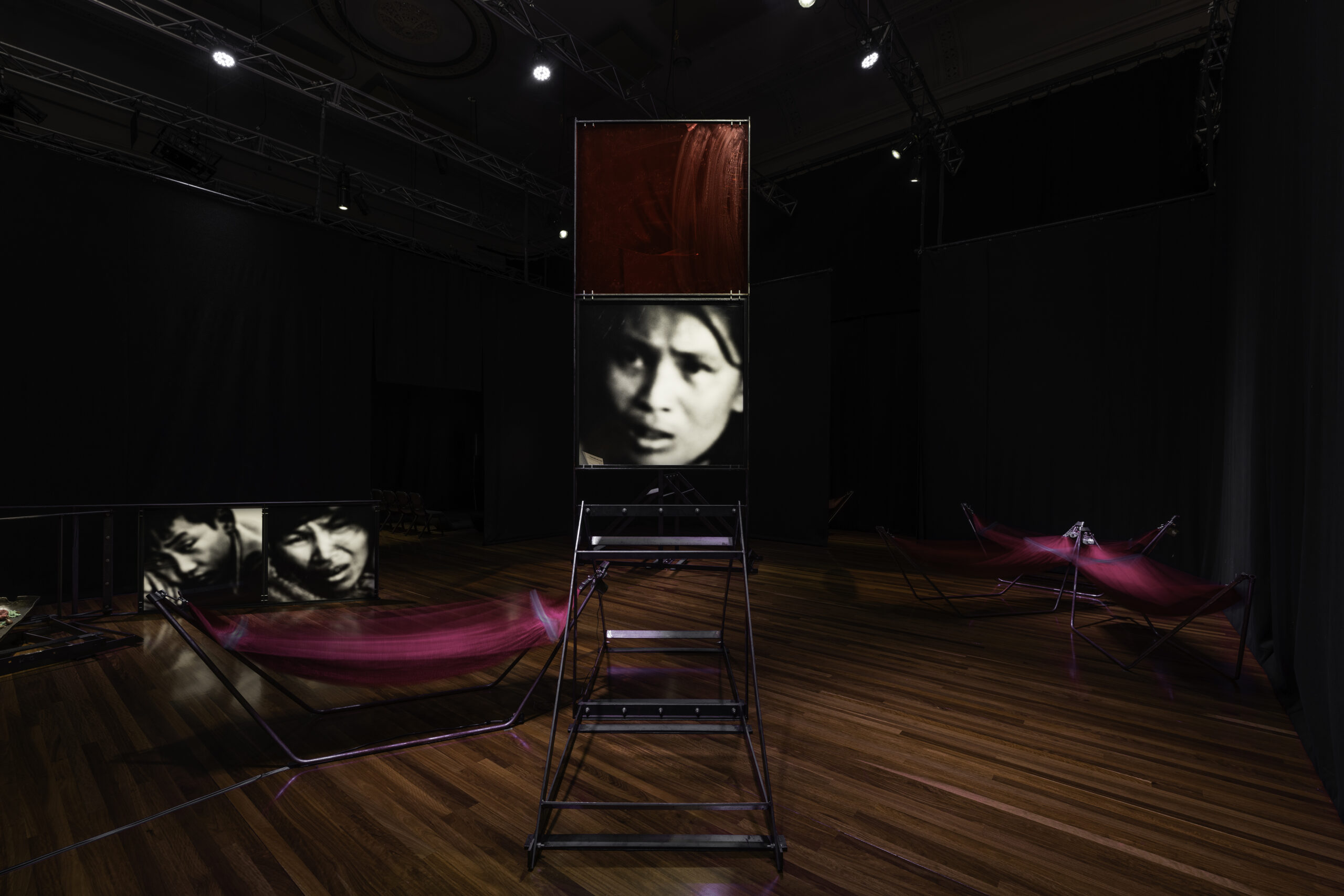Okkoota ಒಕ್ಕೂಟ in conversation
Interview of artists Kirtika Kain, Rahee Punyashloka, Subash Thebe Limbu and Curator Vishal Kumaraswamy by Liang Luscombe
Liang Luscombe: I was struck by the way Kirtika, you have described your experience as a Dalit artist working in Australia as informed by cultural knowledge gaps and silence around caste. How has this become a conceptual material to work from in your artistic practice?
Kirtika Kain: Growing up in Sydney, I never thought I would see an anti-caste exhibition like this in this country. It was unfathomable when my family first migrated here that this sort of conversation would occur. And I think that the gap in cultural knowledge first comes from the act of migration; Australia has a strong practice of demanding assimilation that comes from the White Australia policy. There’s a way that we try to rid ourselves of all the cultural richness we migrate with. Then later in my life, I was curious to learn more about my Dalit family history. A sense of fragmentation comes from wanting to put together your hidden history. There is so much silence around caste; you’re faced with many questions. My art practice is a place of continually unraveling and trying to make sense of this loss, the incomprehension of all that’s come before. In the studio, I feel closest to that sense of the ancestral, and that’s accommodated by reading Dalit literature.
Rahee Punyashloka: Silence is deeply tied with the fragmentation of the Dalit subject that Kirtika spoke about. Access to the ancestors and continuing genealogies with the broader idea of the archive are simply untenable. So, in that sense, the caste system has arranged itself so that it’s always the people who are at the lowest rung who must forego their identity, cultural and artistic practices to assimilate. You’re screwed both ways; if you want to deeply assert yourself as a fundamentally Dalit subject at odds with all cultural values that the Hindu system imposes upon itself, you play into the modalities of caste that you want to annihilate. On the other hand, if you assimilate, then you erase your own identity. It’s a double bind, where the idea of us, the Dalit, being an impossible subject comes in.
These ideas are emblematic of my video Tannerfilm #1 (2023) constructed using footage from the Indian government’s film division’s archive, a film They call me Chamar (1980). The film is about the ills of caste, but the protagonist cannot be a Dalit subject, instead, the film centres on a Brahmin man and his experience. That’s why we have to work with the archive in India, because we are not there, right? In this deconstructive fashion, we must strategically extract ourselves out to present even the possibility of our presence.
Vishal Kumaraswamy: There’s the violence of association, and then there’s the violence of assimilation. While Babasaheb [Ambedkar] is Babasaheb, those were not my conditions growing up. Those are not the conditions for anybody else in any part of the country growing up today. So, we lose a lot of contextual history in trying to assimilate within the Dalit community and into those histories. For me, presenting Subash’s film Ningwasum (2021) in the exhibition is the desire to go beyond some of the constraints of my state or my immediate history to show a wider perspective.
Liang Luscombe: Subash, I’m curious about that sense of time in Ningwasum and how you think of Adivasi Futurism as a strategy to reimagine time.
Subash Thebe Limbu: The Dalit and Indigenous communities have often been shown as an image of victimhood. Although I speak for the Indigenous community, in fact one of the characters in Ningwasum comes from Dalit ancestry. In these struggles, we often say we must show the problem through realism. I’ve had enough of this! I wanted to imagine what could be in the future; to imagine something other than victimization, that image of the oppressed or backward. Acknowledging the present and imagining the future; that’s how I see my practice. Using time-based media to explore the idea of manipulating time and histories was more appropriate. In my film, time travel occurs through weaving time, through the technique of ‘Thakthakma’, which allows the characters to enter different timelines and is derived from the Yakthung handloom weaving tradition. If time is indeed tactile, like a thread, how would you want to weave the fabric of the future? Here I play with the idea of mending the threads or replacing the threads and in a way that affects the present or the future. So, we Indigenous or Dalit communities are marginalised now. I don’t want to see us marginalised in the future. So, I refrain from the dystopian kind of science fiction.
Rahee Punyashloka: Much of my academic research centres around the nineteenth century and from that position I would contend that South Asia’s history is essentially dystopic science fiction. A group of British orientalists and bureaucrats have this sidekick, the learned man of Hindustan, the Brahmin. And they together create the caste census, the bureaucratic framework around which all our nations are fundamentally based. And the number of people involved in this is less than a hundred. And those are the sort of leaders who have fundamentally shaped the lives of almost two billion people for 150 years. That’s as dystopic as it gets.
I’ll give an example from my part of India, in 1831 the census came in. The most prominent identifier of caste is the surname. And so, there were a group of Dalit & Adivasi people [WU1] who wanted to take the surname ‘Nayak,’ which means ‘a hero’ as a deliberate anti-caste move to get away from the negative identity that had been instilled by their name within the Hindu caste system. And because the British were significantly more progressive than the local Brahmins, they were willing to allow that to happen. But the Brahmin people said, ‘You can take the word, in its homophonic-ally similar form, but we’ll change the spelling. So, somebody who’s an upper caste Nayak remains a N-A-Y-A-K, but somebody who’s a lower caste Nayak remains as N-A-I-K.’ So, even within the Odia language, if the homophonic surname allows you to move past your caste identity, however, in the bureaucratic establishment through the English language, your identity in the state system remains.
To return to what Subash was saying, yes, the notion of the victim is such a tired trope. But what is more interesting to me in my video Tannerfilm #1, is that for the Hindu system to maintain its order it requires the underdog within the narrative. So, in that sense, it’s far more interesting to see the subversive underside that exists across all narratives. The most canonical Bollywood films, for example, have protagonists decentered from the caste identity. Anti-caste movement pioneer and writer Jyotirao Phule (1827-1890) does this in his writing; he looks at Hindu myths and the person who’s vanquished and provides that person with a heroic status, we must remember that we already have a historical guideline to which we can use.
Liang Luscombe: When Okkoota first opened, Vishal and I talked about how to represent your own community and the kind of responsibilities and joy that can come with this in artistic making. Kirtika, how do you approach this as you developed your paintings for this exhibition?
Kirtika Kain: I think the idea of representing is challenging when you grow up in the diaspora. There is such depth and the vastness of Dalit experience; sometimes, there is an inclination to want to make sense. But it’s through the process of making the work and asking questions in front of me that feels more honest than trying to do the impossible of representing something out there. I am from the Chamar community, which Rahee’s video Tannerfilm #1 is centered around. So, it was quite something to see that film in Okkoota. I’ve been reflecting a lot on the nuance, the shades, the colour and vibrancy and that has been coming across in the work. But I explore this in the immediate space of my studio.
When I saw Subash’s film, this line from it struck me: ‘Our shared history of struggle to end the practice of exploitation and control unites us all.’ Even when we’re removed from our community, what do we sing with? What are the other shades of our experience beyond this heavy grief?
Image: Star dust by Kirtika Kain, photo: Matthew Stanton
Image description: Prints of Star dust adorn an internal wall of Arts House. Two arch windows are in the centre of the image.
